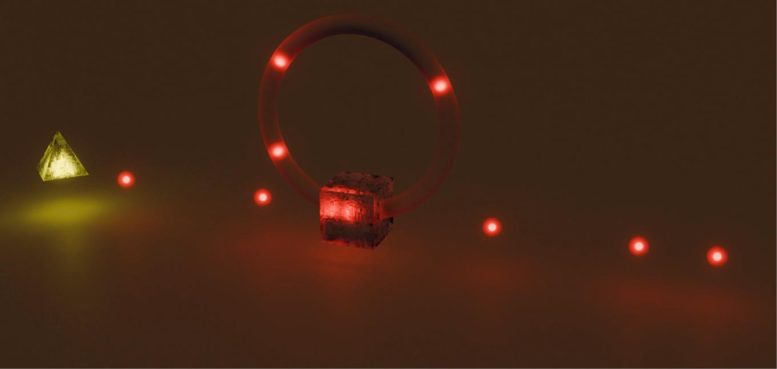
Researchers have demonstrated a scalable method for quantum computing by successfully showing quantum interference among photons using temporal encoding, offering a potential path toward more accessible quantum technologies. Credit: SciTechDaily.com
A leap forward in optical quantum computing.
An international collaboration of researchers, led by Philip Walther at University of Vienna, have achieved a significant breakthrough in quantum technology, with the successful demonstration of quantum interference among several single photons using a novel resource-efficient platform. The work published in the prestigious journal
In contrast, the international team, comprising scientists from University of Vienna, Politecnico di Milano, and Université libre de Bruxells, opted for an approach based on temporal encoding. This technique manipulates the time domain of photons rather than their spatial statistics.

Figure 1. Resource-efficient multi-photon processor based on an optical fiber loop. Credit: Marco Di Vita
To realize this approach, they developed an innovative architecture at the Christian Doppler Laboratory at the University of Vienna, utilizing an optical fiber loop (Fig.1). This design enables repeated use of the same optical components, facilitating efficient multi-photon interference with minimal physical resources.
First author Lorenzo Carosini explains: “In our experiment, we observed quantum interference among up to eight photons, surpassing the scale of most of existing experiments. Thanks to the versatility of our approach, the interference pattern can be reconfigured and the size of the experiment can be scaled, without changing the optical setup.”
The results demonstrate the significant resource efficiency of the implemented architecture compared to traditional spatial-encoding approaches, paving the way for more accessible and scalable quantum technologies.
Reference: “Programmable multiphoton quantum interference in a single spatial mode” by Lorenzo Carosini, Virginia Oddi, Francesco Giorgino, Lena M. Hansen, Benoit Seron, Simone Piacentini, Tobias Guggemos, Iris Agresti, Juan C. Loredo and Philip Walther, 19 April 2024, Science Advances.DOI: 10.1126/sciadv.adj0993